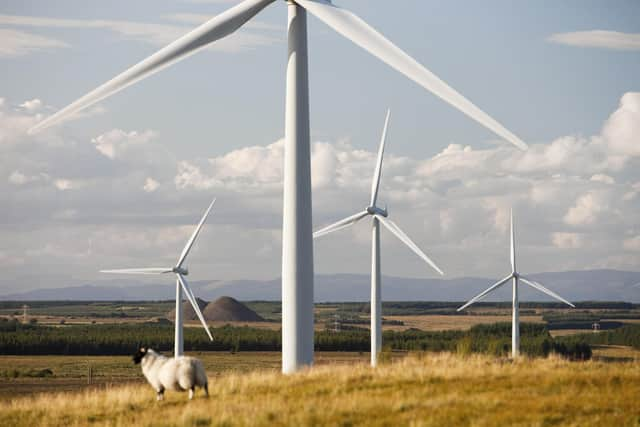Scotland's renewable energy expansion needs some Victorian know-how– Kenny MacAskill
The Victorians were good at strategic planning. When infrastructure was required for sewage or railways, direction was given as to where it was to go and, more importantly, where it shouldn’t. But what now with renewable energy? It’s as vital now as those services were then. Where’s the strategy?
The UK Government doesn’t want onshore wind in England though they’re keen on the energy from turbines on Scotland’s hills. Offshore wind’s welcome to them and being pushed hard. Aspects that go along with both, such as battery storage and hydrogen, are also being promoted.
Advertisement
Hide AdAdvertisement
Hide AdBut they seem to be letting a thousand flowers bloom and see what comes. Maybe they think the invisible hand of the market will deliver? Just as likely we’ll get the wrong things in the wrong places and maybe not even what’s required. It doesn’t require state-controlled enterprises. Even the Victorians were happy to leave it to the private sector. But it does require strategic direction.
We’re facing a plethora of applications for onshore windfarms, battery storage and hydrogen sites. Are they what’s needed or where we want them? East Lothian’s a microcosm of Scotland in many ways. Turbines are visible in the Forth with many more to come; others already turn on the Lammermuirs.
Local benefits?
But now there’s continued applications for onshore development. Given the scale of what’s planned offshore and the fact Scotland produces nearly as much renewable electricity as its uses domestically, are they needed? They’re certainly not required by the locals and the visual impact will be significant. But hey ho, just let the market prevail.


Similarly, applications for transmission stations, battery storage and hydrogen are flooding in. Many are doubtless required but are they for the right sites and what benefit will accrue locally? As an example, there’s an application for a battery storage plant just south of the A1 at Innerwick on existing arable land. It’ll be large as these are basically like many large ship-type containers, surrounded by high fencing.
After it’s built there’ll be no onsite jobs, other than regular checks. The nearest locals will get to work will be some landscaping and that’ll be low grade as it’s not exactly a botanical garden. It’ll also mean construction vehicles on narrow country roads and cabling for the necessary grid connection.
But on the other side of the A1 stands Torness. Now, the nuclear site itself is off limits but there’s land around it with roads and a grid connection already provided. If this development’s to happen, shouldn’t it be there?
Hassle but few benefits
The UK Government will say it’s a planning issue and for the council or Holyrood. That’s true but the Scottish Government seems equally hands off, each application being considered individually, not as part of a national strategy. Why not designated sites? Areas planned for renewable energy, where businesses can co-locate, and jobs be created.
Other areas face similar challenges as East Lothian. Good farmland lost, yet brownfield and other sites dormant. The former’s something we may come to rue. That’s even before we discuss pylons. Underground cabling’s more expensive but environmentally less intrusive.
Advertisement
Hide AdAdvertisement
Hide AdAt the moment, communities are getting little benefit but all the hassle. No work but the environmental damage. We could learn from Victorian planning and direction.
Kenny MacAskill is Alba MP for East Lothian
Comments
Want to join the conversation? Please or to comment on this article.
